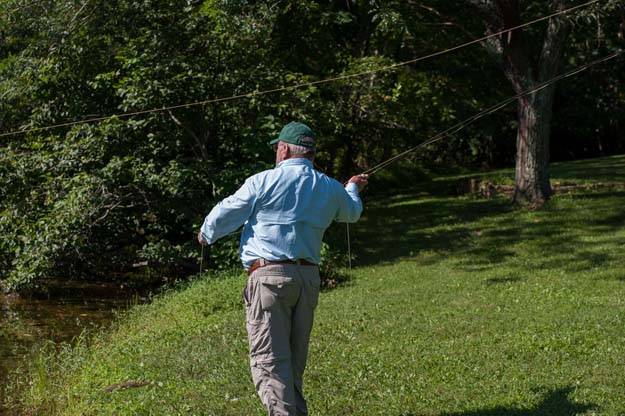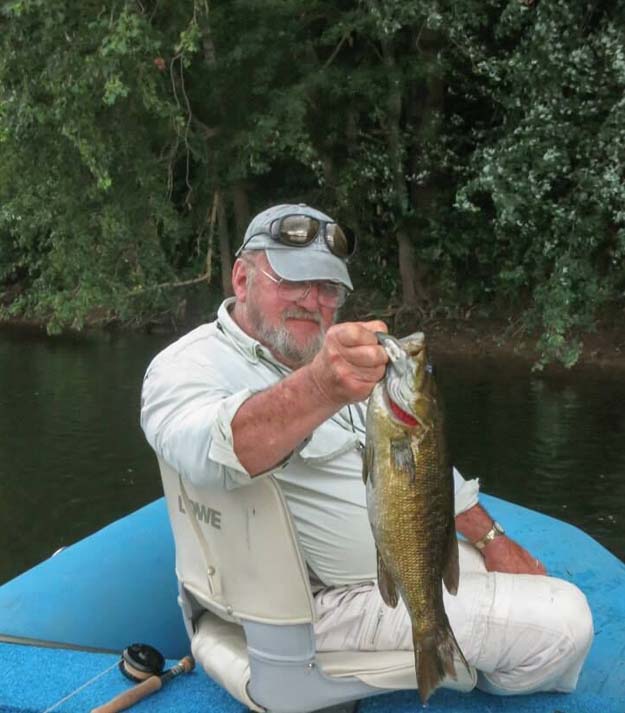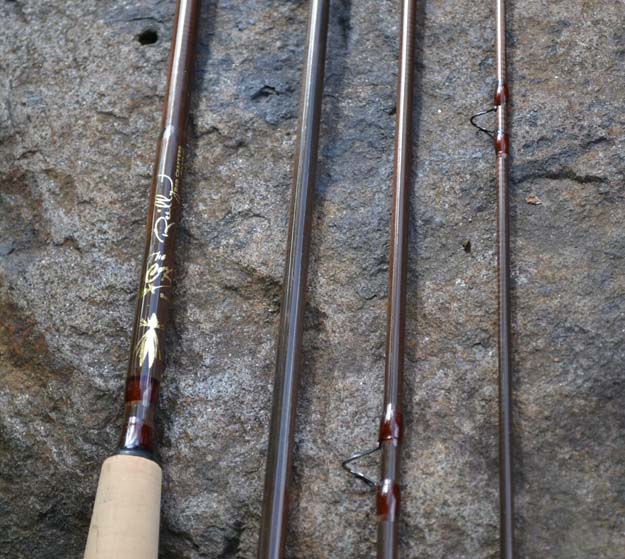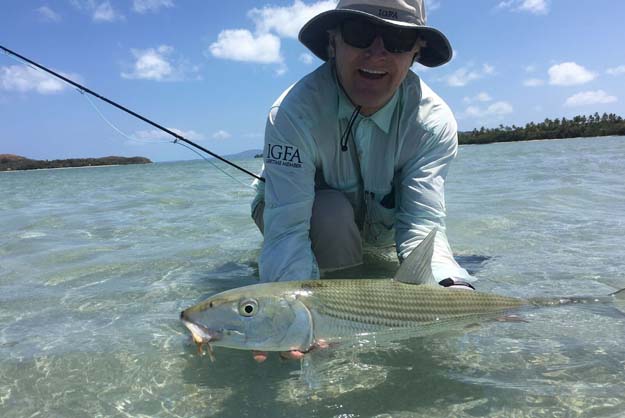“Ask The Man Who Owns One”

Reilly Rod Crafters 5-weight is saddled up with 3-TAND’s versatile “TF-40.” RRC website under construction. It will be up soon. Click “website” to visit 3-TAND. Website
[dropcap]H[/dropcap]aving a history of decades of fly fishing experience, a string of business successes, lifelong friendships with two of fly fishing’s icons, and an unsated desire to improve on current fly rod construction birthed Reilly Rod Crafters (RRC).
These fly rods perform as well as many of the best U. S. made fly rods: Sage, Winston, Scott, Thomas & Thomas, Loomis, and others. Yes, that’s correct. Get over it – Think WHO designed them . . .
The technology of “materials” linked to the making of ‘decent casting’ fly rods is available to all comers, and that is probably what Lefty meant when he said: “Today, it is hard to find a bad fly rod.”
The now ‘old’ new technology of assembling graphite, scrim, boron, epoxies, adhesives, coatings and applying heat recipes has been with us for decades. ‘Tinkering,’ though, has been the only new resource relied on, and always – stronger and lighter.
So, who is Chris Reilly and who designed these ‘better than’ fly rods by rethinking design?
An interview with Christopher Reilly, president and owner of Reilly Rod Crafters, Charlottesville, Virginia
Fly Life Magazine: Chris, good to catch up with you again. It’s been a long time since we met at the ICAST Show in Orlando last July. As you know, I was very impressed with your CK fly rod series. Casting them, in my opinion, sets them apart as in ‘better than’ almost all the rods I got to test drive. So, in keeping with that comment, what contributes to the unique CK rods’ performance I, and others, experienced in Orlando?
Chris Reilly: Yes, good to catch up with you too. And thanks for the kudos on the CK rods. Everyone seems to agree that the CK series is phenomenal.
It was a long haul getting them just right. Each weight has the same action, so if you pick up a 7-weight after a 5-weight, it’s not an altogether ‘new’ rod that needs to be false cast a dozen or more times to get ‘its’ feel. The CK action DNA is in every weight.
For example, our 8-weight rods in their next run, and next year won’t be ‘similar’ to priorly made runs. They’ll be “exactly” the same. We have made every manufacturing assembly, and material measurement automatically audited and meets the smallest possible tolerances.
FLM: What is your academic background?
CR: My classroom education is in Physics. Notice that I said “my classroom education.” I have always believed that the greatest lessons in life are learned on the battlefield, on the athletic field, and in the outdoors.
FLM: What is your work background?
CR: I have over 30 years of experience in manufacturing everything from telephones to ground penetrating radar to hunt for land mines and IEDs overseas and lots of different technologies in between.
Manufacturing is a little like languages, once you have a half dozen understood, the next and next come more easily. You learn the formats.

Two months of tweaking makes the grade as Chuck Kraft trials his 7-weight for the fifth and last time. Reilly, recording the test run, enjoys a sigh of relief saying: “Only the 8-weight to go.” Remarkably, the spoken specifications (Kraft) got perfectly translated into engineered specifics (Reilly). None of that would have happened if Reilly was not a highly skilled angler and fly caster. The 8-weight, by the way, got an “A” on the second trial run.
Reilly Rod Crafters photo.
FLM: What got you started fly fishing and made you so passionate about it?
CR: My passion for fishing started when I was four years old when my father would take me to one of the nearby mountain lakes, city reservoirs, or the outer banks of North Carolina. At the age of 13, I met my best friend, Tracy Kraft. That began my fishing. Tracy’s dad, by the way, is Chuck Kraft.
I learned how to cast, fish for different species, where and when to fish for them and what type and size fly to use.
Chuck showed me how to use a fly rod. That kind of advantage seems almost unfair.
FLM: How many years have you been fly fishing?
CR: I’ve been fly fishing for over 38 years and I just can’t ever get enough time on the water.
FLM: Most of us remembers being mentored by more than one person. Who else was your fly fishing mentor?
CR: Throughout my life, I’ve been blessed with being mentored by some of the very best in fishing, business, and life in general. There are so many to whom I owe so much about fly fishing. Paramount among them would be my dad, Joe Reilly, and Chuck Kraft of course, and Stu Apte. I love each and every one of those guys!
FLM: I know you left lucrative employment to put RRC together, and that you’re enjoying some pink cloud successes early on, but what was it that tipped the “game on” scale?
CR: Good question, one I long tendered with my family. As a fly rodder and having been one for 38 years, I’ve owned dozens of fly rods and always felt like each one suffered in one aspect or another. Too, listening to Chuck and Stu say things like: Yea, it’s a pretty good fly rod, but . . .. And then proceed to described what got left out in the rod build formulae – that all stayed forefront with me. Then, I figured it out.

Chuck’s 6-weight, lower left, already looks battle tested. Chuck, a guide for three decades in western Virginia, holds nice smallie. Photo credit Chuck Kraft.
FLM: Figured what out?
CR: It turned out that was easy because the parameters of what makes a rod superior are well known.
Chuck wanted and I wanted our fly rods, CK Series, to “aid” a newcomer’s cast development, allow him or her to feel the fly line load it. Our CK rods do that on short casts – just where a new fly fisher always starts out.
More importantly, it also lets the experienced angler “comfortably” cast to fish in the 25- to 30-foot range. Incidentally, that range is where over 90% of trouts are caught.
With this built-in user-friendly capacity, you buy a CK rod once and fish with it all the way through expert angler. CK fly rods are ‘not training wheels’ fly rods.
FLM: I noticed, when I first cast the 5-weight and then, similarly, with the 8-weight I felt it took a long time to load the rod, but then, surprise, surprise it ‘catapulted’ on the forward cast. I measured both rods action as medium back cast, fast on the forward cast, and super fast on recovery. I think everyone likes fast on recovery.
You and your August rod designers are obviously great casters. What is RRC’s call on CK rod action? I could not label them.
CR: Well, I can’t say that I’m a great caster, but I’ve learned that casting long, if that’s what you meant, has little or nothing to do with fish catching. Chuck taught me that. However, because all the CK rods have lift and turn strength, they also have that “call me if you need me” power. At least a few times a season, I need a 70- or 90-foot cast out of my 8-weight, and it’s there when I needed it. That’s how Chuck designed it. So, we call the action in the CK series as medium-fast and found an across the board agreement with that call.
A good caster appreciates that ‘feel‘ of line loading the rod and then that catapult you described followed by fast recovery. Those are attributes that Chuck insisted on, and took the longest to get right. And it is the most distinguishing asset of our CK series. We know of no other fly rod in the 4-, 5-, 6-, 7-, and 8-weights that can make that claim.
Carried forward, those features, along with rod lightness not only improve casting but more importantly exorcizes fatigue. A factor built into the CK series. That said, a 12-weight is going to tire one faster than a 3-weight, no matter the design features.
Every guide I have ever talked to has said that about an hour before and two hours after lunch almost every good caster gets reduced to mush status because of rod fatigue. Any stiff or “fast” action rod will do that to all but the fittest.

From the lineup. Chris Reilly photo.
FLM: You just mentioned rod lightness. The craze for rod builders these past decades has been light, lighter, lightest and beyond light. I was struck by how light in-hand the CK 5-weight and CK 8-weight had when casting. Are the CK rod weights within the tolerances of the industry?
CR: Yes, of course. There is a go-in-hand expense there. Lightness is strictly a function of using the very best materials, always, and the care taken during the process of assembly, which is complicated. As an experienced manufacturing person, those materials selections, purchases, quality inspections and manufacturing are always in my zone.
FLM: One of the biggest bugaboos for many is the “attempt” to place a special order. In the past, for example, I wanted to give a retiree a fly rod from a top name brand. My asking to get a small tribute plate put on the rod tube and reel seat was akin in difficulty for them to asking a heart surgeon to perform open heart surgery while snorkeling. Does RRC envision difficulties when asked to accommodate special requests?
CR: Good question, and I’m with you on that annoyance. By my insistence, we will accommodate special orders, including fly rods built to your specifications.
On an aluminum reel seat, for example, we can laser etch names, dates, images, etc. If a customer has a piece of wood that carries some special meaning for them, we can take a 1-inch X 1-nch X 5-inch piece, turn it on the lathe, and finish it as a very special and unique reel seat. Or, if a customer wants a particular type of burl wood for their insert , if we can find it, we can build it into their rod.
Colors – we can change blank colors, wrap colors, etc. We can make custom decals for the rod: name, date, a phrase, image, etc.
We have a customer now that wants our little 6’9” 4-weight fiberglass rod. The rod was designed using a stacked and flamed bamboo reel seat with dark TiCh coated nickel-silver slide bands, but the customer doesn’t want a slide band reel seat. They asked for an up-locking reel seat with a tiger maple insert that is dyed purple.
A special rod is a custom rod. Lead time is longer, and it costs a bit more.
NOTE: Featured Image is a nice Bahamas bone. The fly rod? A Reilly Rod Crafters’; yes, they like salt.
In a coming post, we will have an in-depth review of the RRC CK 5-weight fly rod






